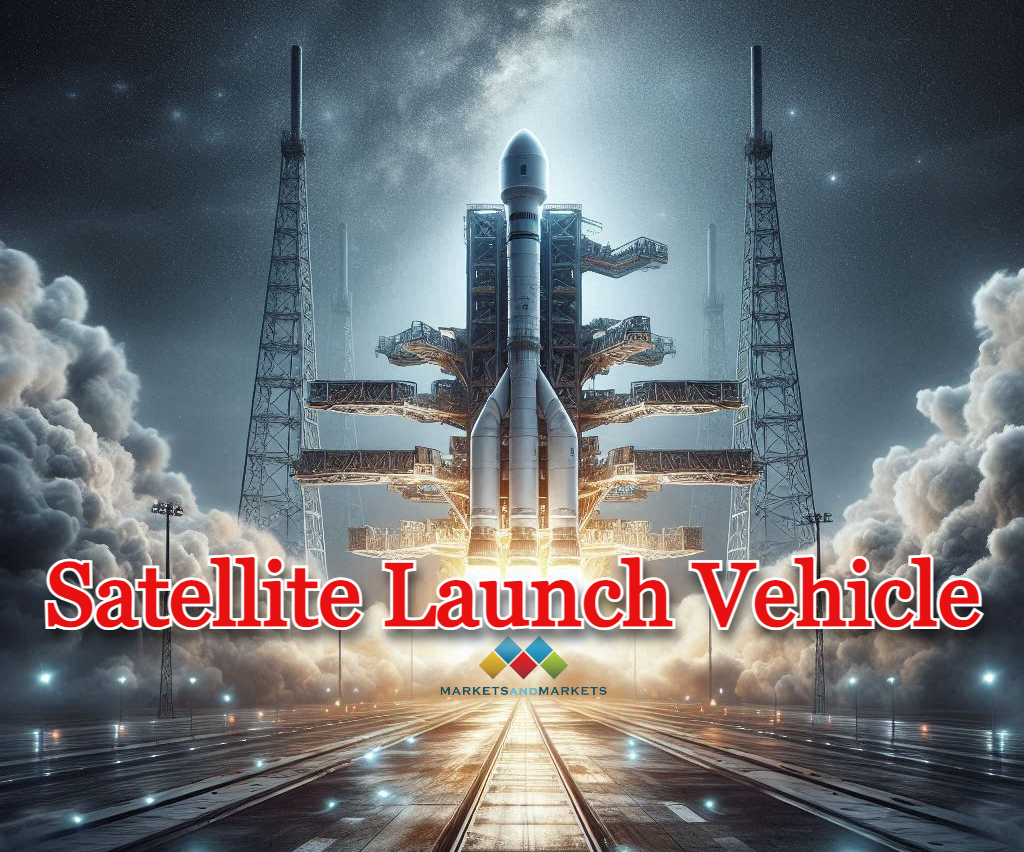The satellite launch vehicle market is poised for significant growth, with projections indicating an increase from USD 15.7 billion in 2022 to USD 29.1 billion by 2027, at a compound annual growth rate (CAGR) of 13.1%. This market expansion is driven by advancements in technology, an increase in satellite constellations, and the rising demand for reusable launch vehicles.

Market Dynamics:
Drivers:
Rise in Applications of Small Satellite Launch Vehicles:
Small satellite launch vehicles, designed for payloads up to several hundred kilograms, are becoming essential due to the surge in small satellite constellations. These constellations are pivotal for Earth observation, communications, and scientific research, fueling demand in the market.
Download PDF Brochure @
https://www.marketsandmarkets.com/pdfdownloadNew.asp?id=115959224
Increase in Reusable Launch Vehicles:
The development of reusable launch vehicles (RLVs) like SpaceX’s Falcon 9 and Blue Origin’s New Shepard is revolutionizing the industry. RLVs significantly reduce the cost of space missions by allowing components to be reused multiple times, enhancing efficiency and reducing waste.
Restraints:
Oversaturation in the Launch Vehicle Market:
With over 75 companies developing small launch vehicles, the market is becoming oversaturated. Early market entrants with proven reliability have an edge, while new entrants must innovate or offer lower prices to compete effectively.
Opportunities:
Increased Outsourcing of Manufacturing Activities:
Companies are increasingly outsourcing manufacturing to reduce costs, enhance efficiency, and access specialized expertise. However, this comes with challenges such as intellectual property protection and quality control, which need careful management.
Challenges:
Reliability and Safety of Launch Vehicles:
Ensuring the safe and reliable operation of launch vehicles remains a critical challenge. High-profile failures highlight the need for continuous investment in research and development to improve safety and performance.
Market Segmentation
By Vehicle:
Small (<350,000 Kg): Suitable for LEO missions, driven by the rise of small satellite constellations.
Medium to Heavy (>350,000 Kg): Capable of carrying larger payloads to LEO, MEO, and GEO, reducing launch costs and enhancing mission flexibility.
By Payload:
<500 Kg, 500-2,500 Kg, >2,500 Kg: Different payload capacities cater to various mission requirements, from small satellites to large telescopes.
By Orbit:
Low Earth Orbit (LEO), Medium Earth Orbit (MEO), Geostationary Orbit (GEO): Each orbit type serves different purposes, from communication satellites in GEO to Earth observation satellites in LEO.
By Launch:
Reusable Launch Vehicles: Expected to grow at the highest CAGR due to cost efficiencies and environmental benefits.
By Region:
Asia Pacific: Expected to account for the largest market share, driven by the demand for digital TV, DTH services, and mobile broadband. Countries like India and Japan are advancing their space programs, contributing to regional growth.
Ask for Sample Report @
https://www.marketsandmarkets.com/requestsampleNew.asp?id=115959224
Key Market Players:
Leading companies in the satellite launch vehicle market include SpaceX (US), United Launch Alliance, LLC (US), Northrop Grumman Corporation (US), Blue Origin (US), and Mitsubishi Heavy Industries (Japan). These players are at the forefront of innovation, driving market trends and technological advancements.
